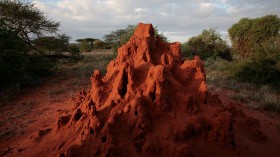Information from several sources has answered a few questions regarding the sinister chunk of plutonium popularly known as the 'Demon Core.'
What is the Demon Core?
Two nuclear bombs were dropped on Japan by the United States in the closing stages of World War II. On August 6, 1945, one was dropped on Hiroshima, and on August 9, one was dropped on Nagasaki. The US was ready to launch a third bomb, fueled by the plutonium core subsequently referred to as the 'demon core,' which was code-named 'Rufus' throughout the operations.
It had a diameter of almost 3.5 inches and was approximately 14 pounds in weight. Additionally, scientists at the Los Alamos National Laboratory were permitted to preserve the core for future research when Japan surrendered, according to All That's Interesting.
The scientists sought to test the limitations of nuclear material, as Atlas Obscura describes. They wanted to know more about the transition from subcritical material to the considerably more hazardous radioactive critical state since they were aware that a nuclear bomb's core reached criticality during a nuclear explosion.
How Deadly is the Demon Core?
Due to its role in two tragic mishaps, the chunk of plutonium at Los Alamos Laboratory earned the moniker 'demon core.'
In the first, while conducting neutron reflection studies, scientist Harry Daghlian placed a 4.4 kg tungsten carbide brick directly into the core, setting off an uncontrollable chain reaction in the plutonium that resulted in a blast of ionizing radiation. Daghlian instantly withdrew the block, but he had already taken a lethal dose; he developed blisters and burns on his palm and passed away 25 days later.
In the second incident, Louis Slotin was assembling two reflecting beryllium sphere halves when the screwdriver slipped, setting off a chain reaction that quickly accelerated and released a burst of ionizing radiation. Slotin was able to swiftly separate the two portions of the core, sparing the other lab workers from more radiation exposure. He reported tasting something sour, and his coworkers saw a blue light in the air and felt a wave of heat. Slotin's condition progressively worsened, and nine days after the incident, he passed away, according to the Institute of Physics.
How did 'Rufus' Become 'Demon Core'?
Only a few months separated the two fatal tragedies that led to substantial changes at Los Alamos.
'Hands-on' criticality tests have to come to an end due to new guidelines, forcing researchers to manage radioactive cores remotely from hundreds of meters away.
The plutonium core was no longer referred to as 'Rufus,' either. It was then that the chunk of plutonium was dubbed 'demon core.'
Plans to utilize the core in 'Operation Crossroads,' which was supposed to be the first nuclear explosion demonstrations post-war, slated to start in the Bikini Atoll a month later, were abandoned as a result of the Slotin disaster and the resulting increase in radiation levels in the core.
Instead, the chunk of plutonium was melted down and added back to the US nuclear arsenal, where it will be reused as needed for additional cores, according to Science Alert.
Also Read: Is Nuclear War Really the Answer to Climate Change?
How Sinister is This Chunk of Plutonium?
It's easy to understand why the scientists gave the demon core the superstitious moniker they did, even if the deaths of two scientists are incomparable to the unimaginable atrocities that would have occurred if the core had been used in a third nuclear assault against Japan.
Then there are the peculiar features that complete the story's setting.
Similar to how Slotin and Daghlian died in the same hospital room and both instances occurred on Tuesdays, the 21st day of the month, rather than merely being killed in accidents using the same plutonium core.
Those are only coincidences, of course and there was nothing demonic about the demon core. The fact that people hurried to create these dreadful weapons in the first place seems to be the sinister element in the situation. The true horror, according to Science Alert, is how spectacularly mid-20th century scientists failed to shield themselves from the great hazards they were playing with, despite fully understanding the serious threats in their vicinity. This is in addition to the horrific repercussions of radiation poisoning.
Related Article: Bomb Simulator Shows Disastrous Consequences If Nuclear Bomb Explode Near You
© 2024 NatureWorldNews.com All rights reserved. Do not reproduce without permission.





